Dion Johnson’s abstract paintings inhabit hairline margins between technologic and handmade. The ten examples in “Feel the Sky,” Johnson’s decadal retrospective at Azusa Pacific University, chart his pictorial evolution while affirming his enduring interests.

Dion Johnson, Feel the Sky (2014). Courtesy of the artist.
From across the room, Johnson’s hard-edge linear compositions evoke spectroscopic absorption lines, television interference, digital filaments and desktop computer backgrounds. These images might as well be computer-generated, so coolly precise they appear. However, closer examination reveals subtle textural quirks: pockmarks where bubbles effused from wet paint, scratches, wash irregularities and masking-line thickness from overlapped paint buildup.
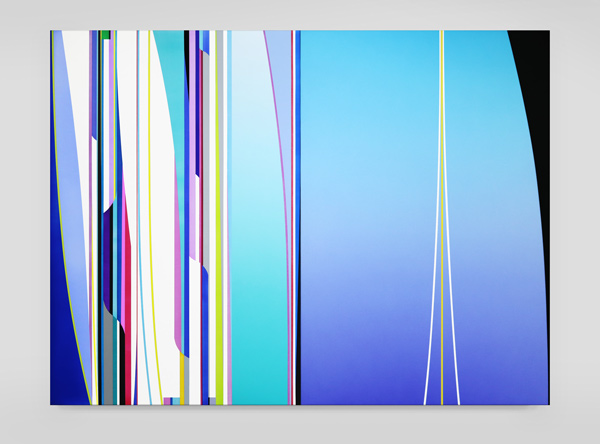
Dion Johnson, Verve 2 (2017). Courtesy of the artist.
Johnson devises his pictures with the premeditation of an architect. He crafts his compositions in Photoshop, then transfers the initial sketches, which he considers “blueprints,” to canvases via rulers and masking tape. Even his utensils—drywall tools, rubber spatulas and spray guns—seem more like that of a mason. It is within vagaries of paint application that Johnson’s pictures accrete homey idiosyncratic charm.
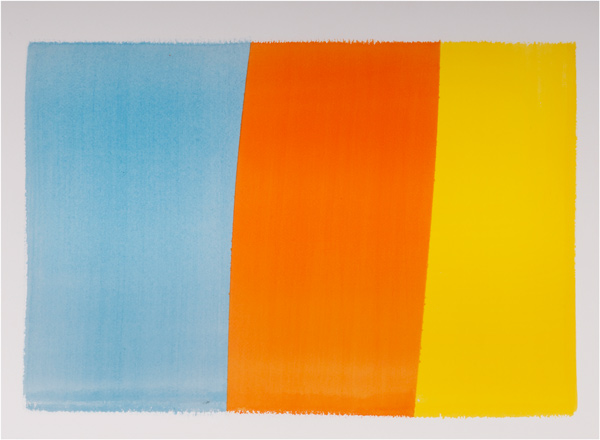
Dion Johnson, Edge (2008). Courtesy of the artist.
Via his informal painterliness, Johnson imbues his pictures with familiarity that counterbalances their digital schema. Edge (2008) appears as a nonchalant watercolor banner of juxtaposed blue, orange and yellow blocks. Bleed-lines betoken the hues’ slight imbrications, while a toothy border underscores the paper ground’s texture. This piece evokes a fabric swatch.
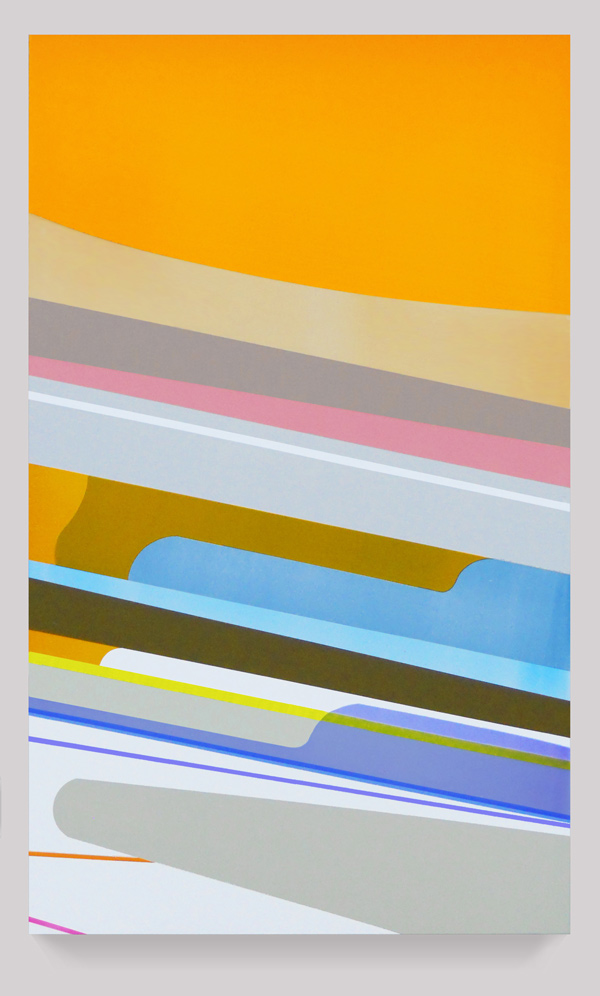
Dion Johnson, Slide (2010). Courtesy of the artist.
Slide (2010) and Flipside (2011) channel 1970’s Lucite accessories, with burnt orange and brown-gold glazes emitting vibrant luster. However, resinous color strata would never bear such sharp demarcations.
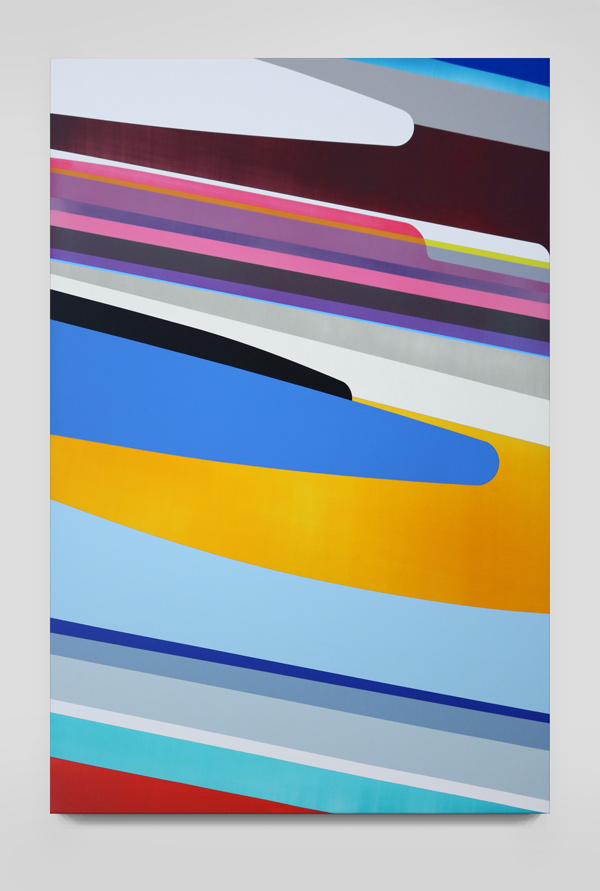
Dion Johnson, Flipside (2011). Courtesy of the artist.
Having studied with Karl Benjamin at Claremont Graduate University, Johnson is clearly a contemporary heir to California Hard-Edge painting. Yet his hand-wrought idiosyncrasy also suggests movements associated more with New York, such as Color Field painting of Morris Louis, Barnett Newman, Frank Stella, et al.
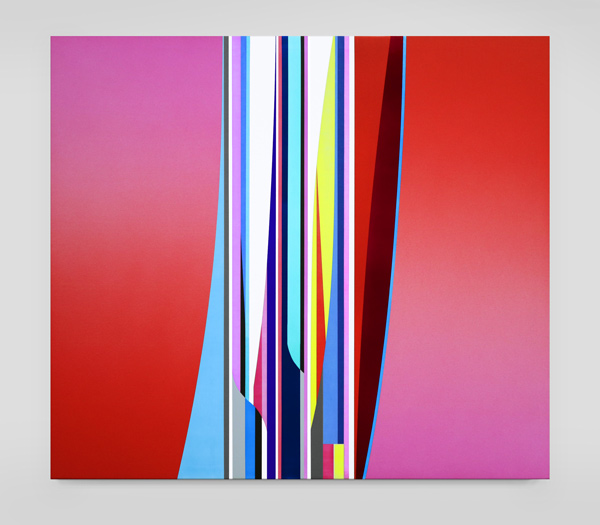
Dion Johnson, Ad Astra (2017). Courtesy of the artist.
Johnson also cites Pop Art as inspiration. Indeed, his references to the pervasiveness of digital aesthetics could be viewed as a contemporary iteration of Pop, similar to Lichtenstein’s appropriation of comic book styles. While his early pieces invoke Pantone-esque graphic design and vintage home decor, Johnson’s later paintings become more ethereal, heightening the atmospheric nature implied by the show’s title. Ad Astra (2017) conjures sunrise and sunset bifurcated by quotidian activity. Radiant pictures as these bring to mind digital screens as replacements for stained glass.
Dion Johnson, “Feel the Sky,” Jan. 12- Mar. 2 at Azusa Pacific University’s Duke Gallery, 701 E. Foothill Blvd., Azusa, CA 91702. www.apu.edu/gallery



















0 Comments